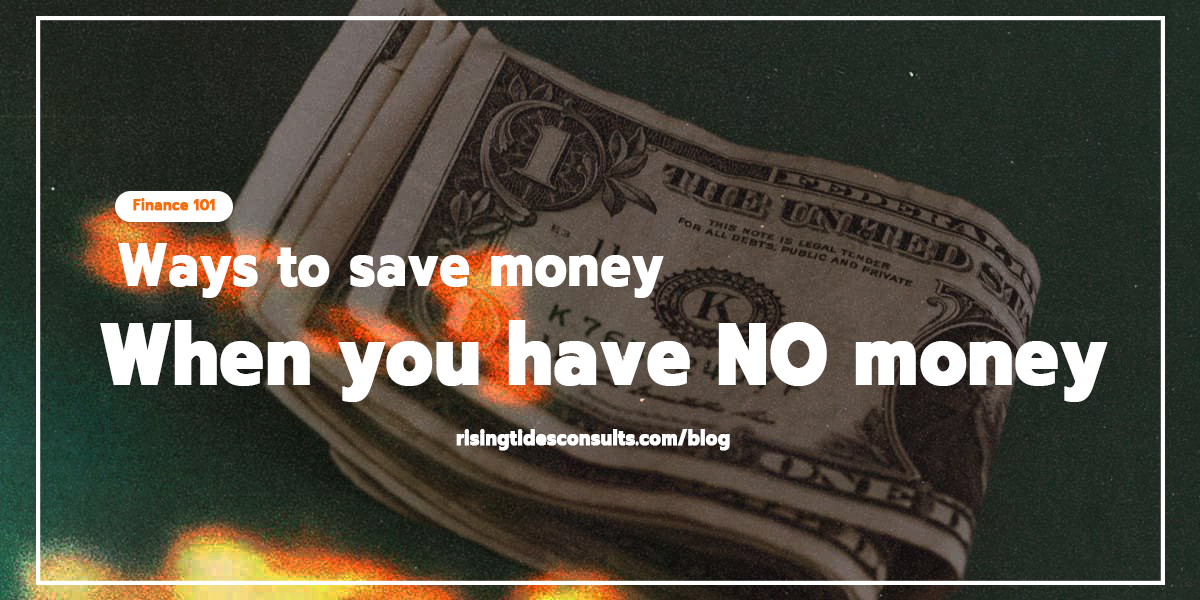
What debt should you pay first?
At Rising Tides, we know how easy it is to acquire debt.
You buy your daily cappuccino on a credit card, have a shopping spree on another, and the next thing you know, you’re hundreds of dollars deep in debt. Even worse, you owe different amounts across different cards, with varying degrees of interest.
That credit card with 36% interest… Yikes.
But these debts don’t just come with financial consequences – the truth is, they reflect on your credit score (as in, the score that will affect your entire grown-up life). Now that you have experienced the dangers of credit card debt firsthand, it’s time for some solutions.
If you’re in debt, you’re in trouble, but you’re not hopeless. Let’s repeat that: You’re not hopeless.
But when you’re overwhelmed with debts, it might be hard to know where to begin. This article aims to break down the best ways to tackle your debts and all the different methods offered to make yourself debt-free.
How to Pay Off Debt Fast
Unfortunately, there is no quick fix to paying off debt, but there are methods to making debt more manageable.
If you have several debts but don’t have the finances to pay them, get to budgeting. By creating a spreadsheet, you can track your expenses better and know what you can buy. Sure, once you start saving money, you may not be able to make your daily Starbucks run, but by paying your debts off, you can get their weight off your back.
So, before you look at the different methods, start saving money. Every saved dollar can put a dent in your debt.
Debt Payment Methods
When you see debt in your bank account, it’s time to take action.
It’s easy to procrastinate, but remember that every wasted moment costs time and money. The tricky part is there are different ways to do this.
Debt payment comes in many forms. Let’s explore two of the most popular: the debt snowball method and the debt avalanche method.
What is the Debt Snowball Method?
Sometimes, you need a head start. Paying off debts can be a long haul, and reaching all of them can feel like a slog.
The debt snowball method seeks to solve this problem. This method pays off your smallest debts first, motivating you to chase the higher ones.
Imagine a snowball rolling from the top of a mountain. At first, it may seem small and unsubstantial, but soon enough, it accumulates power.
See the correlation?
By encouraging you to tackle your minimum payments, this method works you up to your larger ones. You can accumulate the funds necessary to get rid of your debts.
What is the Debt Avalanche Method?
If you’re thinking: “Screw snowballs, I wanna bring down the mountain,” we’ve got the method for you.
Rather than gaining momentum, the debt avalanche method comes in quickly. Where the snowball tackles the smallest debts, the avalanche tackles the largest amounts andthe cards with the highest interest.
Rather than building steam, the avalanche method is about coming in hot and axing your biggest problems first.
Which is the Best Way to Get Out of Debt?
When paying off your credit card debt, no method is better than the other. Whether it’s the snowball or the avalanche, it all comes down to personal preference.
Debt Snowball Method Pros and Cons
The snowball method comes with a whole lot of good.
The method’s principle is the idea of building steam. Just like life, you have to walk before you can run. By targeting the smallest balances, you’re psychologically gearing up to take on your most significant balances.
Like a snowball, this method gains momentum quickly. Every subsequent debt will be a higher one, meaning your progress will only grow more and more pronounced. Soon enough, you’ll be wondering where your debt went at all.
Of course, it can’t be all good. Because you’re targeting your smallest debts with the lowest interest, the snowball method may cost you more in the long run. So while the snowball method may give you more positivity up top, it may leave you with less in the wallet.
Debt Avalanche Pros and Cons
Of course, the debt avalanche method doesn’t come with any clear answer either. Let’s explore a few benefits and drawbacks.
Most notably, the avalanche method saves you money. You’re saving yourself from heavy monthly payments by targeting the highest interest. While this can take more time to build up, it’s helpful to axe the outstanding debts immediately.
Though this method may seem slower, it typically gets you through quicker. By targeting the highest debts, every following payment is smaller and smaller – meaning you’ll gain momentum here too.
Unlike the snowball method, the problem is that your progress won’t seem as apparent. The drawback here is the mental game. You may be quick to tap out if things don't feel momentous. If you’re not worried about your mindset, then the avalanche method may be perfect for you.
Keep in mind: there’s no objectively right or wrong way to tackle your debt. The most important thing is that you’re paying attention and making an effort. We can help you to remove negative items from your credit report, but that doesn't necessarily abolish your debt.
Other Methods for Debt Repayment
If you’re not feeling these methods, no stress. There are a few more options you can try out, but they’re a bit less popular.
Debt Consolidation
With debt consolidation, the goal is to transfer all your debts to a single debt, ideally with a lower interest rate. This method may work, but it may tank your motivation. Rather than having a series of debts to take down, you’ll find yourself chipping away at a giant boulder with little progress. What could be more demoralizing than that?
Balance Transfer
The balance transfer method aims to transfer all your debt from a high-interest rate credit card to a low-interest rate. While this method may save you money – it won’t do anything about your debt. You may not find the motivation needed to make your payments.
Paying Your Debts: The Bottom Line
Nobody’s said finances are easy—literally nobody.
If you’re deep in debt, don’t flounder. Just start to make the moves to get out. If you’re unsure where to begin paying off your debts, try out the snowball or avalanche methods. Between the two, you’re likely to find something that fits you.
Your high school could’ve taught you a thing or two. Luckily, Tides is here to help you out. To explore our blogs, you don’t have to be a stan or be a paid customer or whatever. We’ve got a surplus of info. Are you looking to figure How to master credit utilization? Are you looking for how to validate you even own this debt?
Or are you looking for a way to build your credit and clean up mistakes of your past? (Yeah, that’s real.)
Whatever the reason may be, there's no excuse for only $25 a week to not have your own financial advisor.

Start Building Credit With Rising Tides
Your credit score may not seem all that important until you need it. From apartment applications to your car loans, this three-digit number is the key to your major life milestones.
-
✅ Build credit
-
✅ Remove negative items
-
✅ Change your life






